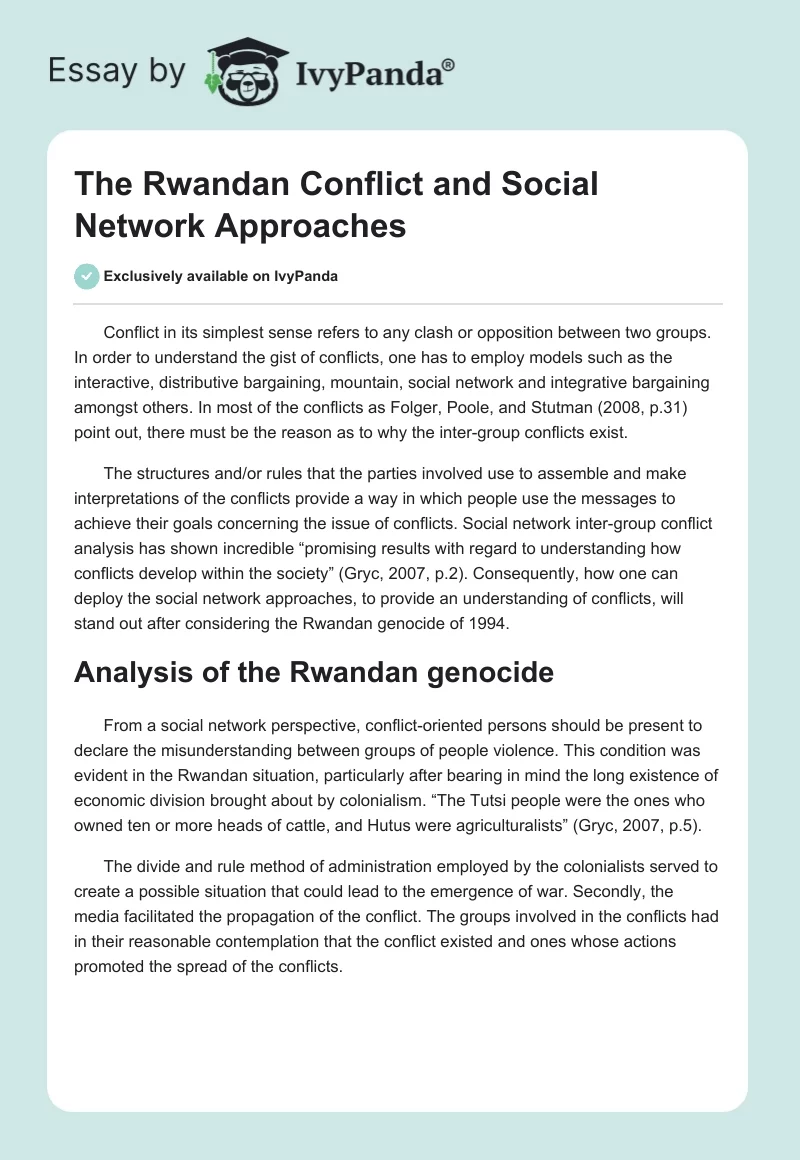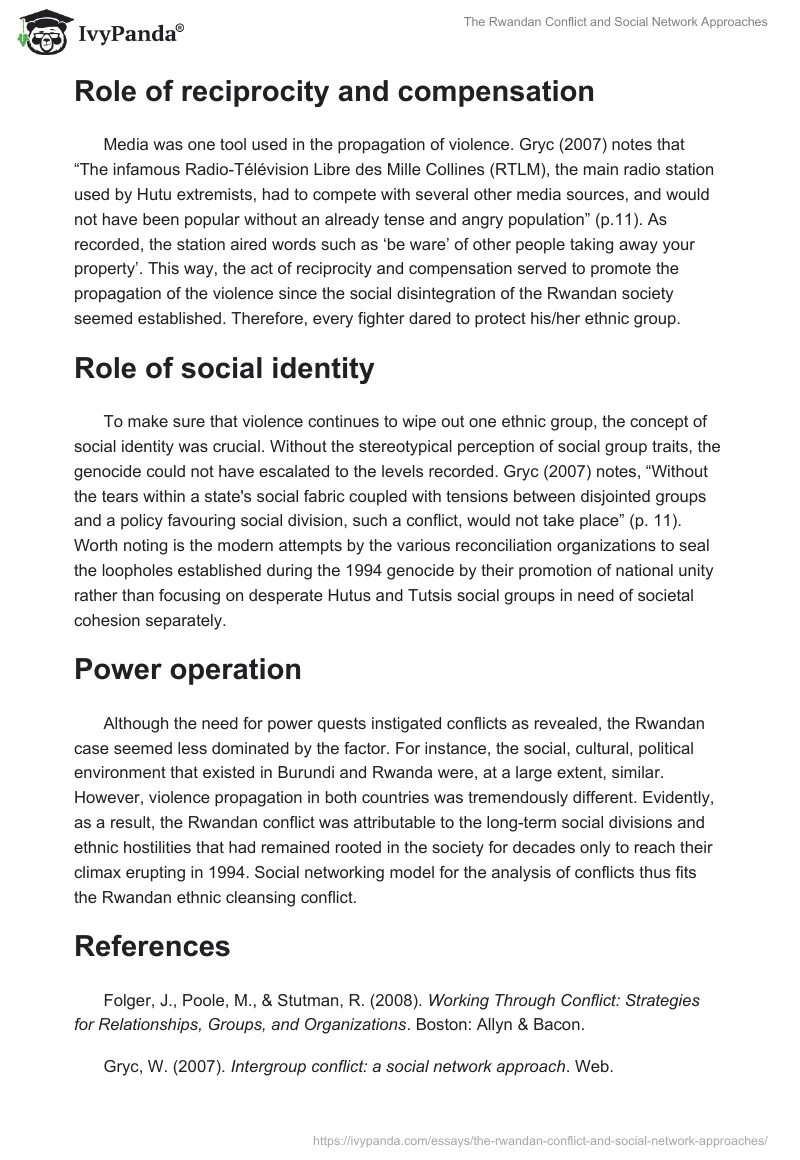Conflict in its simplest sense refers to any clash or opposition between two groups. In order to understand the gist of conflicts, one has to employ models such as the interactive, distributive bargaining, mountain, social network and integrative bargaining amongst others. In most of the conflicts as Folger, Poole, and Stutman (2008, p.31) point out, there must be the reason as to why the inter-group conflicts exist.
The structures and/or rules that the parties involved use to assemble and make interpretations of the conflicts provide a way in which people use the messages to achieve their goals concerning the issue of conflicts. Social network inter-group conflict analysis has shown incredible “promising results with regard to understanding how conflicts develop within the society” (Gryc, 2007, p.2). Consequently, how one can deploy the social network approaches, to provide an understanding of conflicts, will stand out after considering the Rwandan genocide of 1994.
Analysis of the Rwandan genocide
From a social network perspective, conflict-oriented persons should be present to declare the misunderstanding between groups of people violence. This condition was evident in the Rwandan situation, particularly after bearing in mind the long existence of economic division brought about by colonialism. “The Tutsi people were the ones who owned ten or more heads of cattle, and Hutus were agriculturalists” (Gryc, 2007, p.5).
The divide and rule method of administration employed by the colonialists served to create a possible situation that could lead to the emergence of war. Secondly, the media facilitated the propagation of the conflict. The groups involved in the conflicts had in their reasonable contemplation that the conflict existed and ones whose actions promoted the spread of the conflicts.
Role of reciprocity and compensation
Media was one tool used in the propagation of violence. Gryc (2007) notes that “The infamous Radio-Télévision Libre des Mille Collines (RTLM), the main radio station used by Hutu extremists, had to compete with several other media sources, and would not have been popular without an already tense and angry population” (p.11). As recorded, the station aired words such as ‘be ware’ of other people taking away your property’. This way, the act of reciprocity and compensation served to promote the propagation of the violence since the social disintegration of the Rwandan society seemed established. Therefore, every fighter dared to protect his/her ethnic group.
Role of social identity
To make sure that violence continues to wipe out one ethnic group, the concept of social identity was crucial. Without the stereotypical perception of social group traits, the genocide could not have escalated to the levels recorded. Gryc (2007) notes, “Without the tears within a state’s social fabric coupled with tensions between disjointed groups and a policy favouring social division, such a conflict, would not take place” (p. 11). Worth noting is the modern attempts by the various reconciliation organizations to seal the loopholes established during the 1994 genocide by their promotion of national unity rather than focusing on desperate Hutus and Tutsis social groups in need of societal cohesion separately.
Power operation
Although the need for power quests instigated conflicts as revealed, the Rwandan case seemed less dominated by the factor. For instance, the social, cultural, political environment that existed in Burundi and Rwanda were, at a large extent, similar. However, violence propagation in both countries was tremendously different. Evidently, as a result, the Rwandan conflict was attributable to the long-term social divisions and ethnic hostilities that had remained rooted in the society for decades only to reach their climax erupting in 1994. Social networking model for the analysis of conflicts thus fits the Rwandan ethnic cleansing conflict.
References
Folger, J., Poole, M., & Stutman, R. (2008). Working Through Conflict: Strategies for Relationships, Groups, and Organizations. Boston: Allyn & Bacon.
Gryc, W. (2007). Intergroup conflict: a social network approach. Web.


